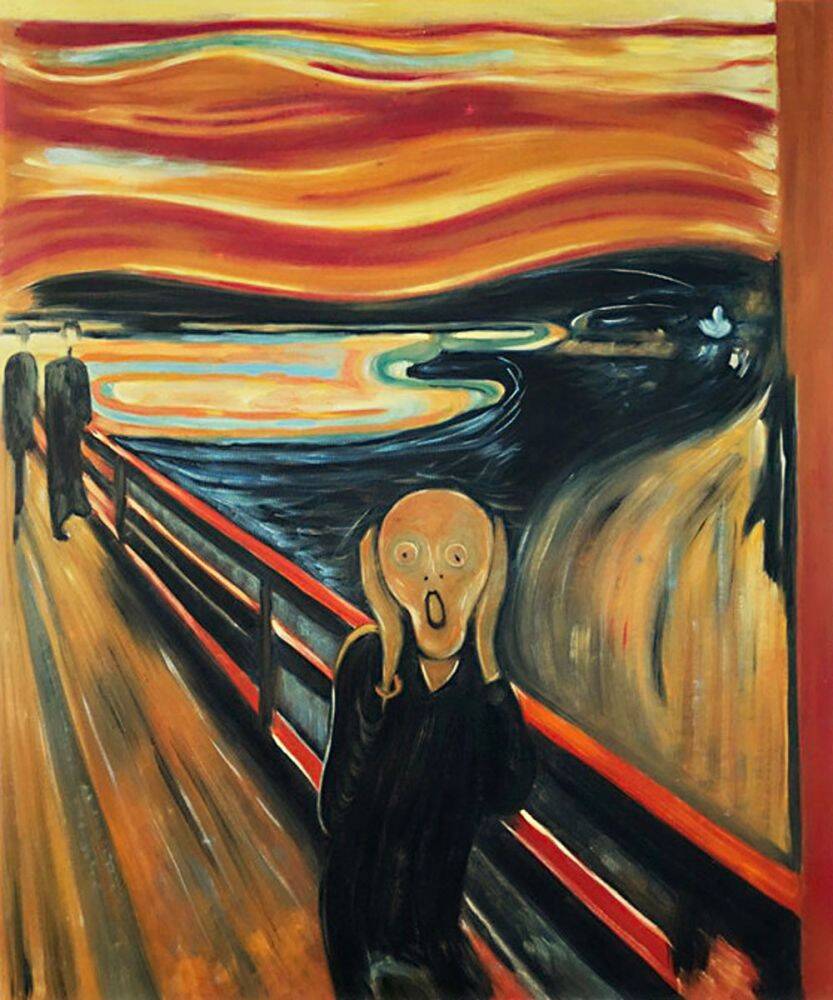How Mental Illness Shaped the Works of These Artists
Artists are at often times tormented, leading them to dive into the arts. By using art as an escape mechanism, their psychological state can easily be seen in any given painting. This happens more so when the artist is in a certain mood while painting. Here, we explore several famous artists who suffered from various mental health issues, and take a look at how their lives and artwork were affected.

The month provides an opportunity to reflect on the importance of mental health and wellbeing, and to encourage everyone to prioritize their mental health needs.
Throughout Mental Health Month, individuals and organizations work together to increase awareness about the importance of mental health and to promote positive change in our communities. The goal is to reduce the stigma associated with mental illness and encourage more people to seek help when they need it.
There are many ways to get involved in Mental Health Month and help raise awareness. Some organizations hold events or campaigns to promote mental health awareness, while others use social media to share facts, statistics, and resources about mental health. Individuals can also share their own stories to help reduce the stigma associated with mental illness.
Here are some famous artists who notoriously suffered from mental health issues...
*** FRANCISCO DE GOYA ***
Francisco de Goya became deaf in the year 1792 due to a severe illness that was never diagnosed. His disease caused him to temporarily experience hallucinations, visual impairment, confusion, and partial paralysis.
The severity of his illness and the possible lead poisoning could have caused Francisco de Goya to develop mental health problems such as depression, mood swings, and hallucinations. His art was a way to cope with his suffering and Goya wrote in a letter that the creation of paintings like Yard with Lunatics, 1793-4, helped him occupy his “imagination, mortified in consideration of my ills.”
*** VINCENT VAN GOGH ***
A group of experts met in the year 2016 for a symposium that was organized by the Vincent van Gogh Museum in Amsterdam to discuss the illnesses the artist could have suffered from. They concluded that Vincent van Gogh probably had bipolar disorder, borderline personality disorder, alcohol use disorder, and he suffered from psychotic episodes. Van Gogh also had a very unbalanced diet and drank lots of alcohol which could have made his condition worse.
The Artist Vincent van Gogh at Saint-Remy
One obvious way of how Van Gogh’s mental health problems influenced his art is the depiction of various subjects and landscapes of Saint-Rémy. The artist incorporated these in his work due to his stay at the asylum. The professor of psychiatry and behavioral science at the Johns Hopkins University James C. Harriswrote several essays about the connection between art and mental illness.
According to James C. Harris, The Starry Night could be a depiction of how Van Gogh’s condition stabilized when he was at the asylum. Harris wrote: “The cloudlike images in the center of the sky assume the archetypal form of a mandala, a symmetrical form that frequently emerges as psychological conflicts come into balance.“ (Harris, 2002). The dark cypress, though, could indicate the approaching emergence of psychological problems, since the cypress is a symbol of death in the area that Van Gogh was staying at the time.
*** EDVARD MUNCH ***
Edvard Munch led a tortured life; his greatest artworks reflect the struggles he faced. This piece narrates the story of his life, exploring the ways in which his mental illnesses were related to his art, and how his art evolved as a result of this.
During his life and following his death, Munch has been diagnosed with depression, anxiety and bipolar disorder, among other illnesses. The ways in which figures are orchestrated, expressions are portrayed and colours are assigned present clues about Edvard’s suffering. This is similar to the way in which verbal and behavioral expressions are able to present symptoms of illness to a doctor.
(NOTE: The painting above is 'The Scream' by Munch)- https://en.w...ki/The_Scream
*** FRIDA KAHLO ***
Mark Rothko, an extremely depressed and possibly bipolar man, changed his style many times because of his mental well-being. His transition from his original style that was influenced by Expressionism to his last “multi-forms” was abrupt, and although he states they were not self-expressions, it is very obvious that there is an emotional connection behind the colours chosen. Rothko, by all means, is one of the most well known contemporary artists, but had the unfortunate circumstance of mental health issues, but out of that, he was able to create incredible art that inspired and affected people all over the world.
*** MARK ROTHKO ***
Mark Rothko, an extremely depressed and possibly bipolar man, changed his style many times because of his mental well-being. His transition from his original style that was influenced by Expressionism to his last “multi-forms” was abrupt, and although he states they were not self-expressions, it is very obvious that there is an emotional connection behind the colours chosen. Rothko, by all means, is one of the most well known contemporary artists, but had the unfortunate circumstance of mental health issues, but out of that, he was able to create incredible art that inspired and affected people all over the world.
<3
There are many ways to get involved in Mental Health Month and help raise awareness. Some organizations hold events or campaigns to promote mental health awareness, while others use social media to share facts, statistics, and resources about mental health. Individuals can also share their own stories to help reduce the stigma associated with mental illness.
It's important to remember that mental health is just as important as physical health, and that seeking help for mental health issues is a sign of strength. No one should have to suffer in silence, and Mental Health Month provides an opportunity to break down barriers and promote acceptance, understanding, and compassion.

